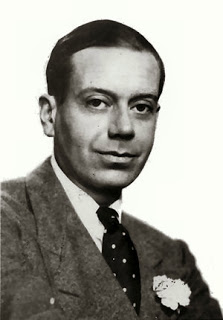Mixed musical duos, plus first published blues with vocals.
Eva Plays Dead (@EvaPlaysDead), Derby, England, November 11, 2013.
“The historical references in the 1st Blues book are great. Had no idea about most of it.”
nora j mckiddie (@mckiddie_j), Michigan, USA, November 6, 2013.
BluesMuse42.
More by accident than design, the last two posts featured a fair share of duets. Last time we had a young Jules Holland and (quite) youthful Dr. John playing a barrelhouse duet in the fashion of those great 1940s boogie woogie duets, by Albert Ammons and Pete Johnson, amongst others.
 |
| Albert Ammons (1907-1949) & Pete Johnson (1904-1967) |
In the post before that, Ella FitzGerald sang about cocaine with the Chic Webb Orchestra; and Lonnie Johnson and Victoria Spivey featured on Dope Head Blues. Links to all three clips are in the preceding posts should you be interested.
 |
| A classic Ike & Tina Turner shot |
There was Ike and Tina Turner and Sonny & Cher in the 1960s, the Carpenters in the 1970s and, perhaps, Ashford & Simpson through the 60s, 70s and 80s, although A&S were more songwriters for other artists than full time performers. Of course we’ve had one off duets like Dolly and Kenny, Diana and Lionel, etc. but since they were never permanent acts, they can’t count.
Compared to other musical combinations, the mixed twosome doesn’t come along that often. Yet the first blues ever published with vocals was the mainstay of one of the great black mixed double acts of the early twentieth century: Baby Seals and Baby Fisher.
 |
| First blues vocal published: in 1912 |
By 1911, they had cracked the notoriously difficult black theatres of York and Chicago and a year later, Baby Seals had his great blues
publishing hit, Baby Seal’s Blues’.
Released in August 1912, this was a significant milestone in blues
history, being the second blues ever published, the first published blues featuring vocals and the first published blues by a black composer.
The first blues instrumental published, incidentally, was the instrumental Dallas Blues, released in Oklahoma City in March,1912, by a young white guy called Hart Wand, the son of German immigrants. You might have heard of blues published before then, but they were songs with the word ‘blues’ in the titles, published as ragtimes. (You can find much more about this in the second volume of How Blues Evolved, available on Amazon.) Dallas Blues is generally considered the first tune written and published as an actual blues.
Words and music by Baby F. Seals
Arranged by Artie Matthews
past four, somebody knocking at my door
I went out to see what it was about, they told me my honey gal was gone
I said, Bub that’s bad news, so sing for me them blues
I love you baby don’t care what you do
(He) Oh sing’em sing’em sing them blues, ‘cos they cert’ly sound good to me
today, I got’em bad, want to lay down and die
I’ve been in love these last three weeks, and it cert’ly is a misery
There ain’t but one thing I wish was right,
(She) Honey babe, mama’s coming back to you
(He) Come on babe, oh sing ’em, sing ’em, sing them blues
Honey babe, pops ain’t mad with you today,
Oh my baby told me just yesterday, she’d take her trunk and move away
I said, hon, I know what it is about. I know babe you just want to put me out
Now babe I’ll go insane, oh listen while I sing
(She) Honey baby, mama do she do she double do love you
(He) Oh sing ’em, sing ’em, sing them blues,
I’ve been in love these last three weeks, and it cert’ly is a misery
There ain’t but one thing I wish was right,
(She) Honey babe, mama’s coming back to you
(He) Come on babe, oh sing ’em, sing ’em, sing them blues
‘Cause they certainly sound good to me.”
 |
| Rainey & Rainey: Assassinators of the Blues, they billed themselves. |
The daughter of two African-American minstrel troupers, 14-year-old Gertrude Pridgett from Columbus, Georgia, made her debut as a singer and dancer with the Bunch of Blackberries review around 1900.
At 18, she met and married the dancer, singer and comedian, Will Rainey, and they went on the road as Ma and Pa Rainey.
Gertrude said she first heard what is now called blues in Missouri around 1902, when a girl started singing in a strange way about a man who had left her.
The song was so haunting that Ma used it in her act with Pa in their Rabbit Foot Minstrels review with great success.
A young star of the future was also in Ma’s troupe learning the ropes as a dancer: Bessie Smith.
From 1914, Gertrude and Will toured as Rainey and Rainey, Assassinators of the
Blues. What a great name!
Male and Females continued to tour together during the 1920s, namely Butterbeans and Susie; and the first blues guitarist ever recorded, Sylvester Weaver, with vocalist Sarah Martin. Now, there was a mixed double act I’d really like to have seen. See 14 May archive, “From Russia (and Ukraine) With Love”.
http://www.amazon.co.uk/s/ref=nb_sb_noss?url=search-alias%3Ddigital- text&field-keywords=how+blues+evolved+volume+one
In the USA, please follow this link:
http://www.amazon.com/s/ref=nb_sb_noss?url=search-alias%3Dstripbooks&field-keywords=how+blues+evolved
The two How Blues Evolved eBooks were later combined and significantly added to, making the BIG 390-page paperback, America’s Gift: the untold history of how blues evolved. This is its link: http://goo.gl/At5AZe





